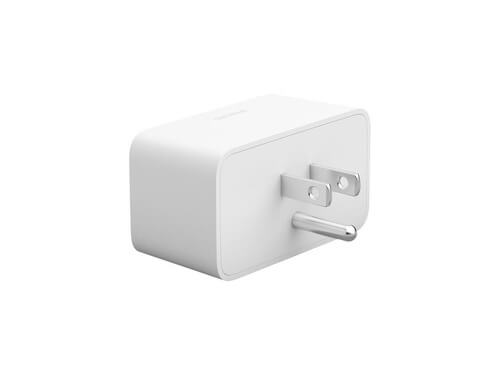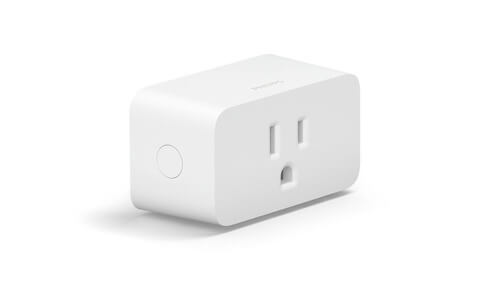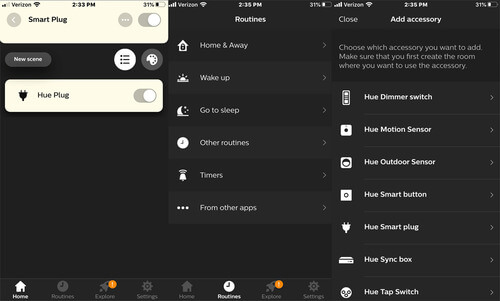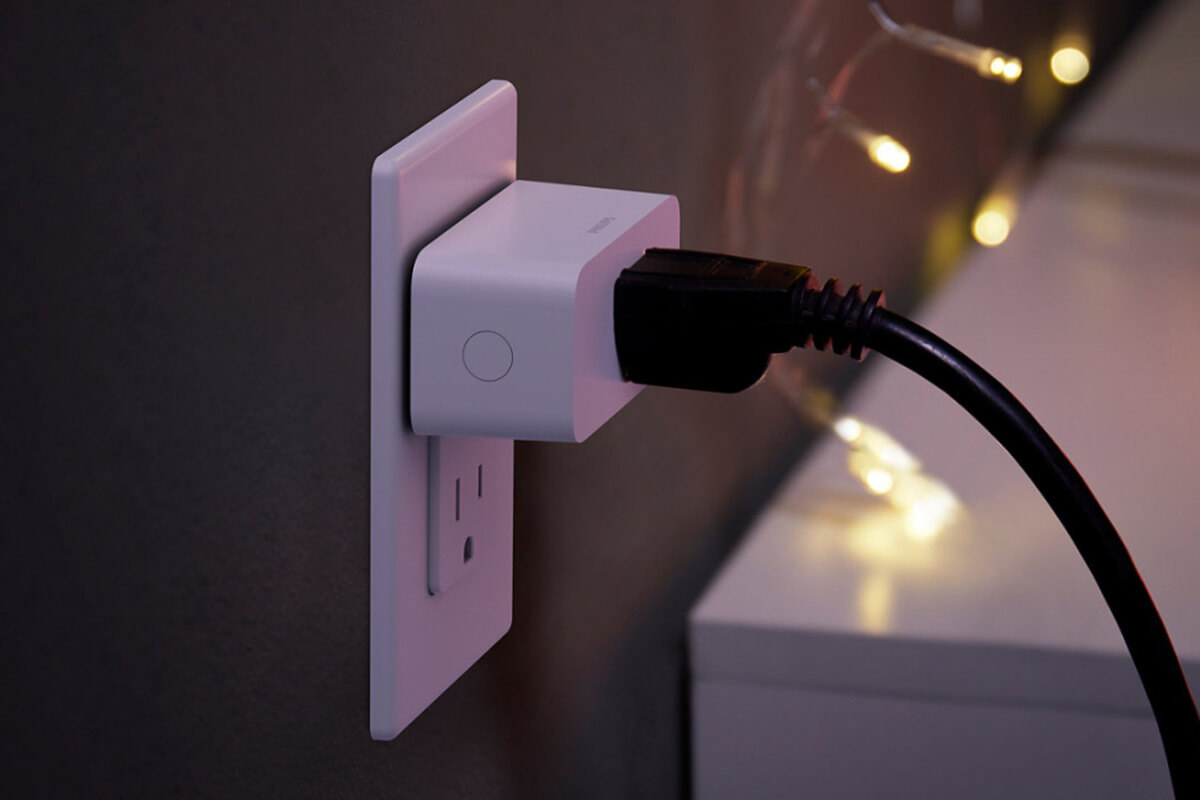Pros
Adds any light to a Hue system
Supports Amazon Alexa and Google Assistant voice commands
Works with IFTTT
Can be used independently from Hue system
Cons
No Wi-Fi
Requires bridge for remote control and IFTTT
Lacks power reporting
PHILIPS HUE SMART PLUG SPECS
Size | 2.0 by 1.0 by 3.0 inches |
|---|---|
Amazon Alexa | |
Apple HomeKit | |
Apple Siri | |
Energy Reporting | |
Google Assistant | |
IFTTT |
The Hue Smart Plug ($29.99) makes it possible to add non-smart lighting to your Philips Hue ecosystem. Designed for lights only, this Bluetooth-enabled single-outlet smart plug is easy to install and uses the Hue mobile app to turn lights on and off, run routines, and interact with Amazon Alexa and Google Assistant voice services. It can also interact with other smart devices via IFTTT applets, but you have to connect it to a Hue Bridge to do this and to control the plug remotely.However, it lacks certain features when compared to the $17.99 Samsung SmartThings Wi-Fi Smart Plug, such as power reporting and an embedded Wi-Fi radio.
Design and Features
The Hue Smart Plug comes in white and features a single three-prong outlet on the front, along with a three-prong plug on the back. Measuring 2.0 by 1.0 by 3.0 inches (HWD), it is slightly smaller than the SmartThings plug (1.5 by 2.6 by 2.1). The left side of the plug has an on/off button, while the interior houses Bluetooth and Zigbee radios. However, it lacks a Wi-Fi radio. Philips recommends that the plug be exclusively used for lighting and not for other devices such as coffee makers and fans.

Back of Philips Hue Smart Plug

You can control the plug by turning it on and off using Alexa and Google voice commands, provided that the plug is within Bluetooth range of your Alexa or Google device. However, to operate the plug from a distance and enable interaction with other smart devices through IFTTT applets, you'll need to connect it to a Hue Bridge ($59.99). Notably absent are the power usage reports that are available with various other models, including the SmartThings plug, the Currant WiFi Smart Outlet, and the ConnectSense Smart Outlet 2.
You can control the plug using the same Hue Bluetooth app (available for Android and iOS) as the Hue Bluetooth White and Color Ambiance bulb. Alternatively, if you're integrating it into an existing Hue system and Bridge, you can utilize the comprehensive Hue app. Both applications provide Routines that enable you to schedule the plug's on/off actions or synchronize them with sunrise and sunset. However, only the main Hue app and Bridge allow you to control the plug and integrate its operation with other Hue lights connected to the Bridge.
Upon opening the app, you are greeted with a screen that showcases all of your Hue rooms and the corresponding light statuses within each room. Tapping on the tab for a particular room allows you to easily toggle the entire room's lights on and off. At the bottom of the screen, you'll find the Routines button, which directs you to a screen where you can utilize presets like Home and Away, Wake Up, and Go To Sleep. These presets enable you to schedule the plug's on/off cycles at specific times. Alternatively, you can craft your own personalized Routines based on factors such as the time of day, sunrise, and sunset. The Explore button leads to a screen with information regarding Friends of Hue, Hue Entertainment, partner apps, and links to instructional videos. The Settings button guides you to a screen where you can establish rooms and zones, configure lights and accessories, create entertainment areas, and perform software updates.

Installation and Performance
Installing the Hue plug was remarkably simple. I connected the plug to my Hue Bridge. Alternatively, setting it up as a Bluetooth device is just as effortless using the Hue Bluetooth app. To begin, I plugged the device into an outlet, launched the Hue mobile app, navigated to Settings, and chose Accessory Setup. Then, I selected Add Accessory and picked the Hue Smart Plug from the list of devices. After tapping Search, the plug was swiftly discovered and added to my Hue account in a matter of seconds. Additionally, it was automatically recognized by Alexa and included in my Alexa device list.
The Hue Smart Plug performed admirably during testing. It responded instantly to on/off commands, both from the manual button and the on/off buttons in the Hue app. Alexa voice commands also worked without a hitch, as did my IFTTT applet, which instructed the plug to turn on when a Ring Stick Up Cam detected motion. I incorporated the plug into my Go To Sleep and Wake Up routines, and it consistently succeeded in turning off and on according to my schedules.
Conclusions
The Hue Smart Plug makes sense for anyone who already possesses a Philips Hue lighting system. It is easy to install and allows you to control non-smart lights using the Hue Bluetooth mobile app. However, to make it work with other smart devices via IFTTT applets and control it with Alexa and Google voice commands when beyond Bluetooth range, a Hue Bridge is necessary. On the other hand, the Samsung SmartThings Wifi Smart Plug, priced around $20 lower, offers much better value for those who don't have a Philips Hue system. This plug is compatible with various small appliances, has its own Wi-Fi radio, and provides power usage information, making it the preferred choice for smart plugs.


